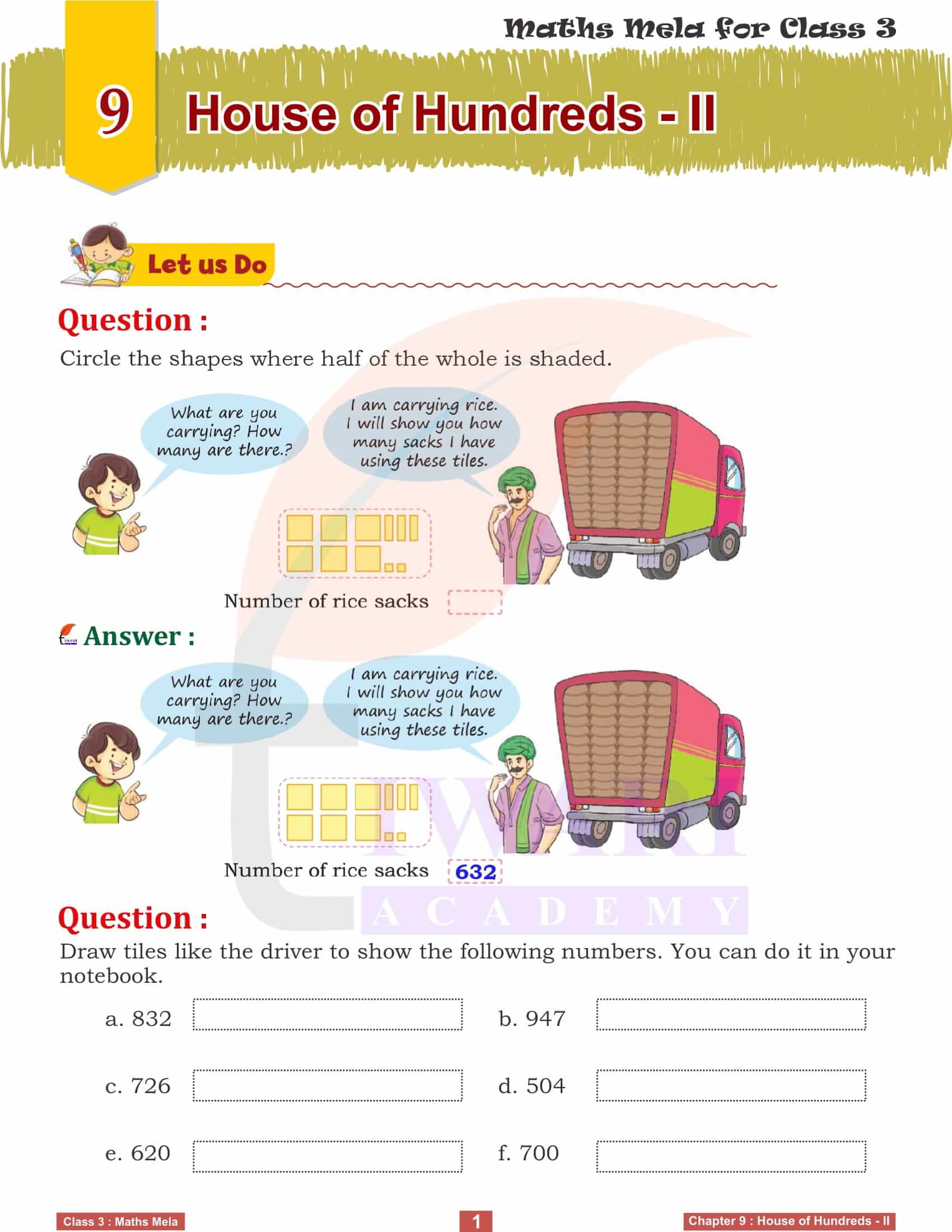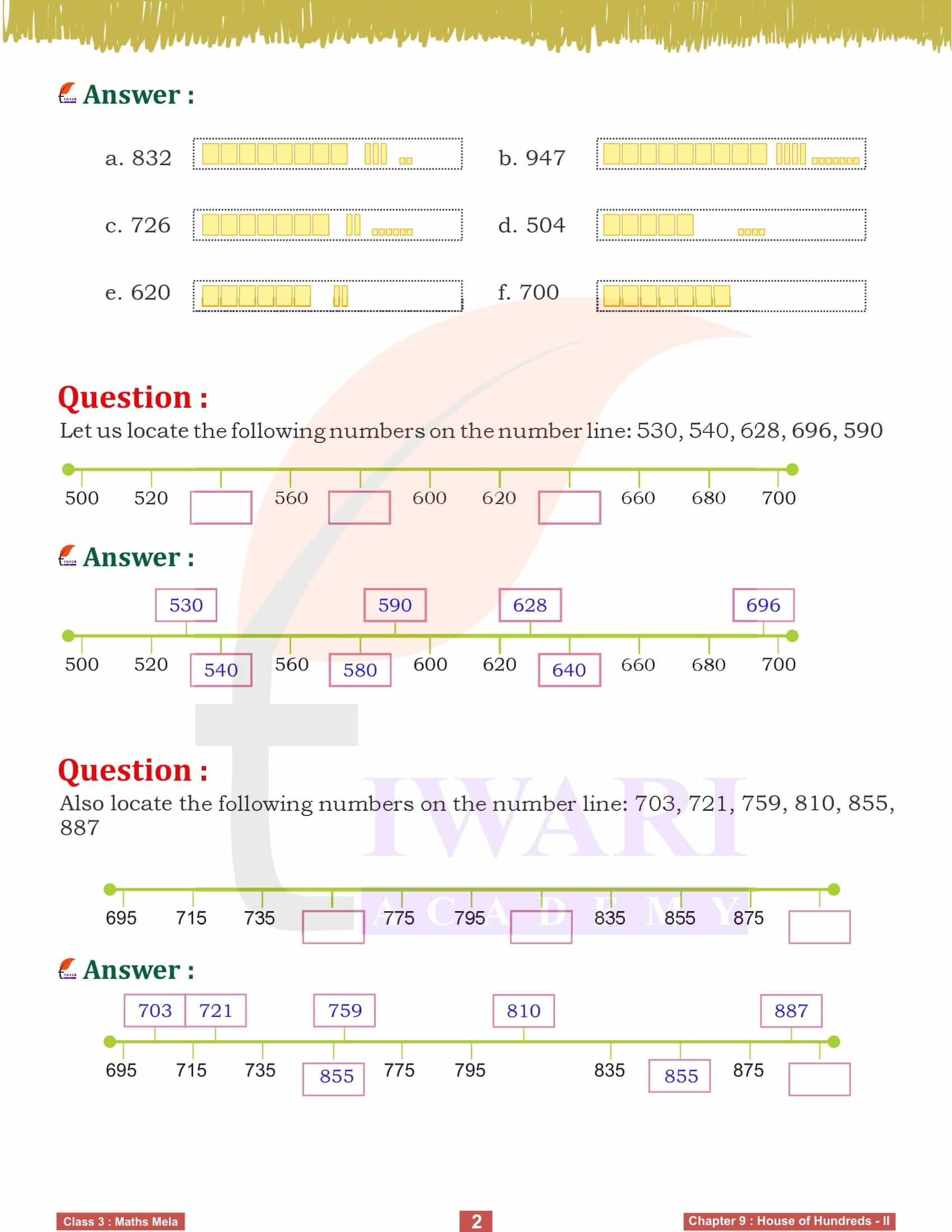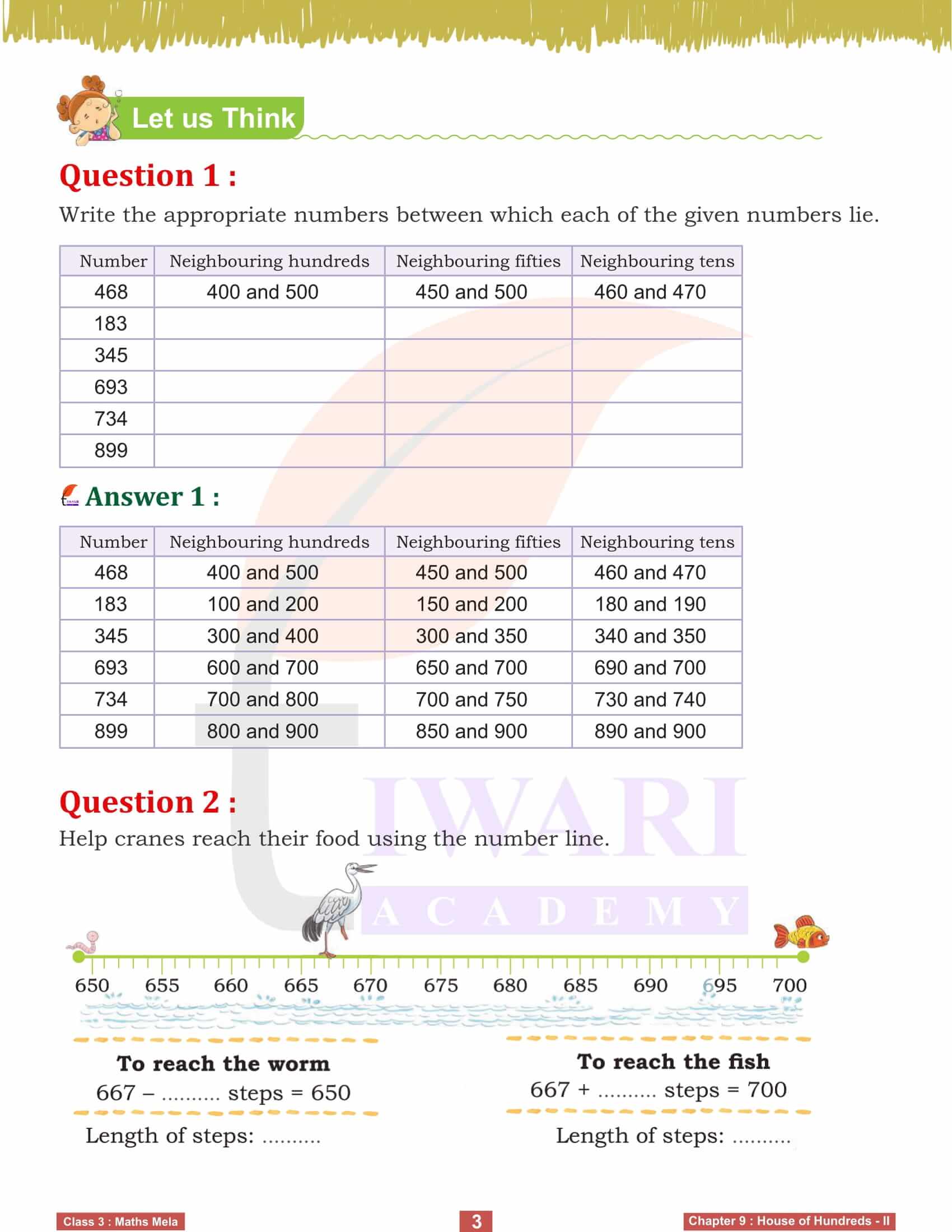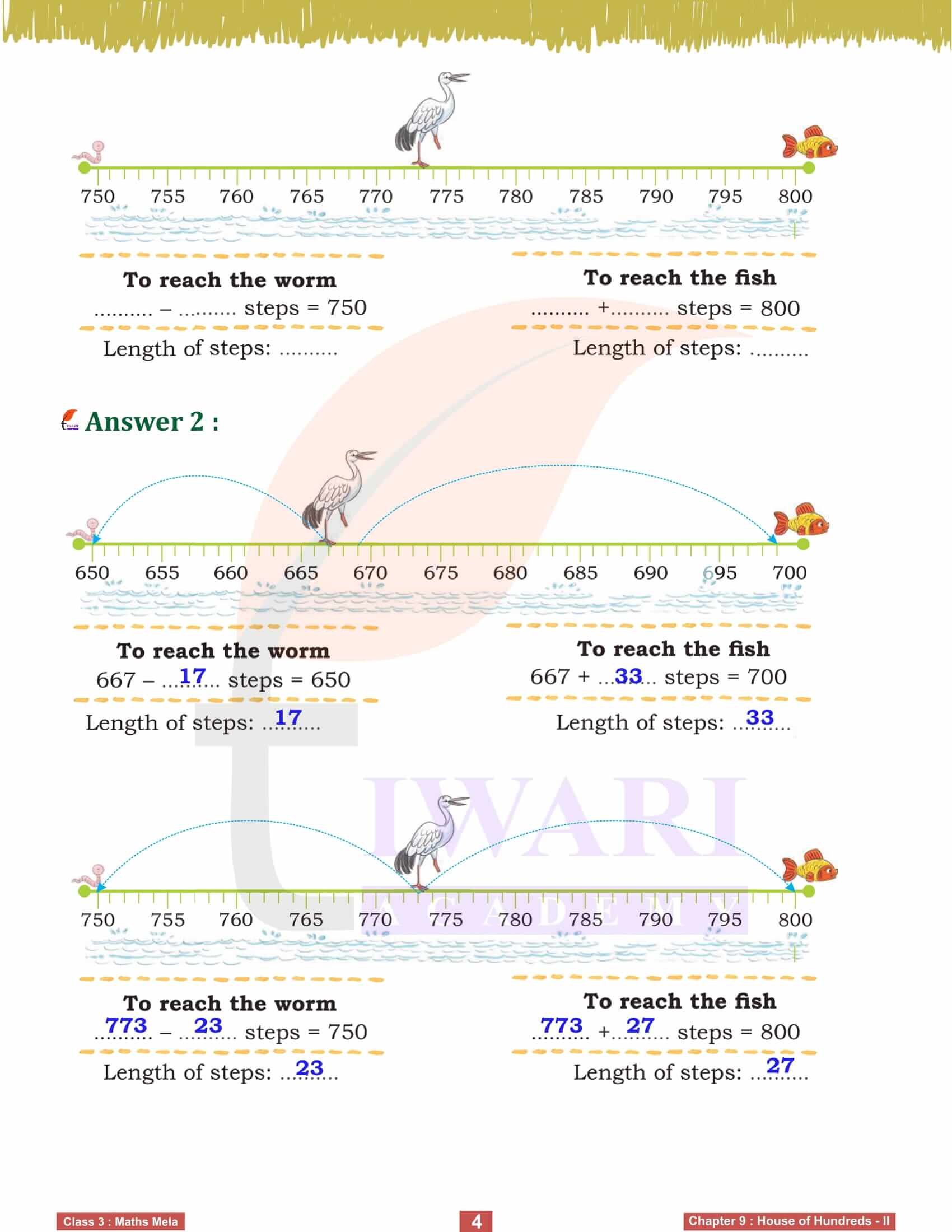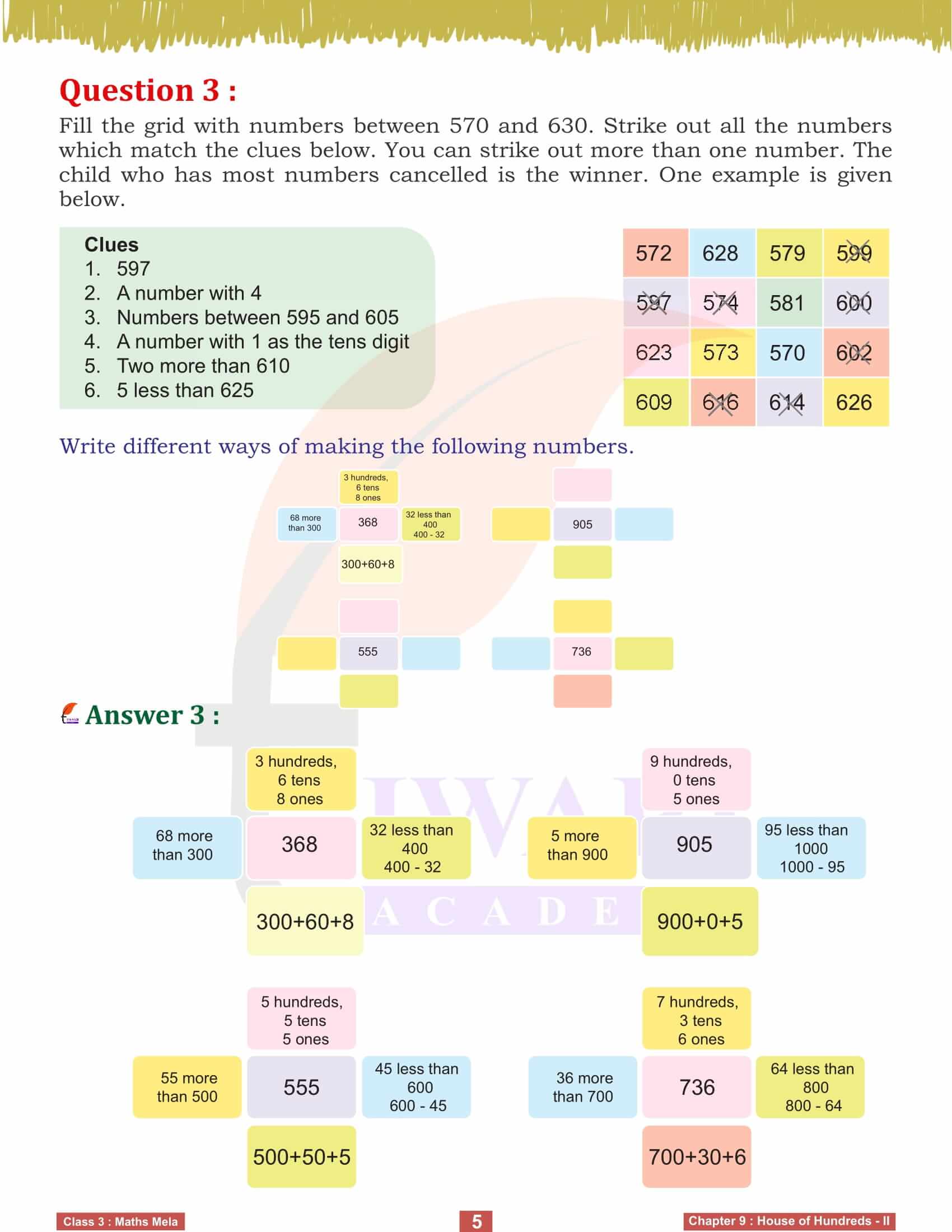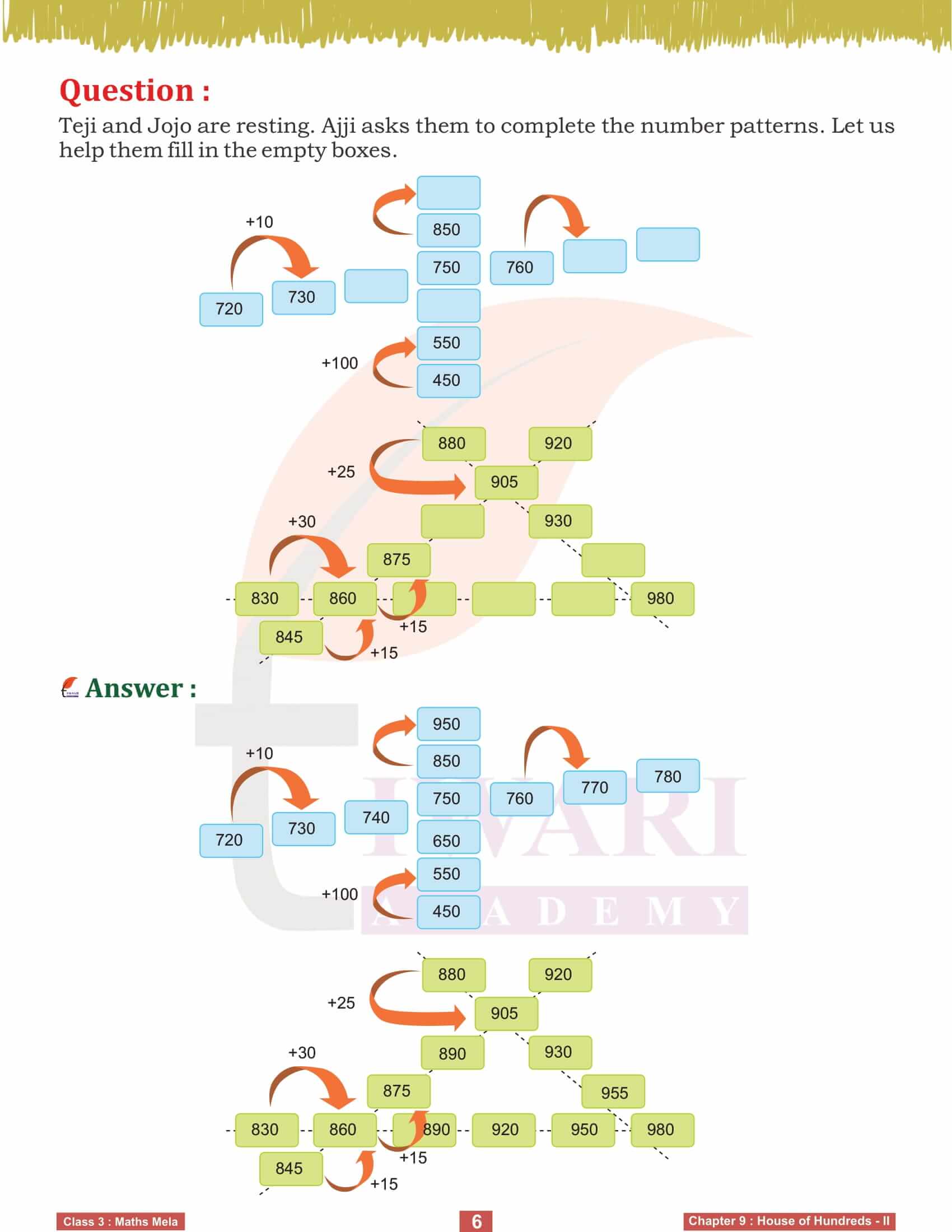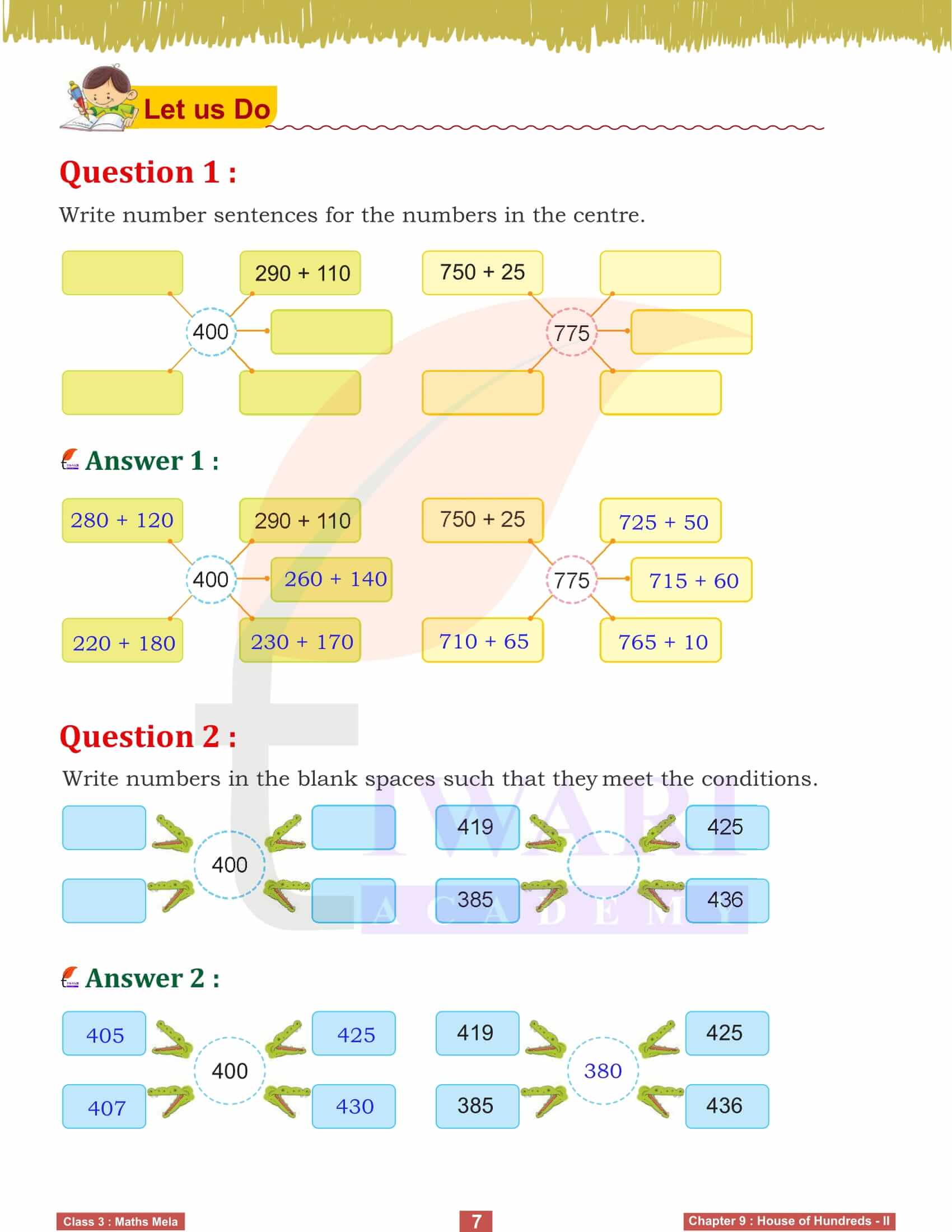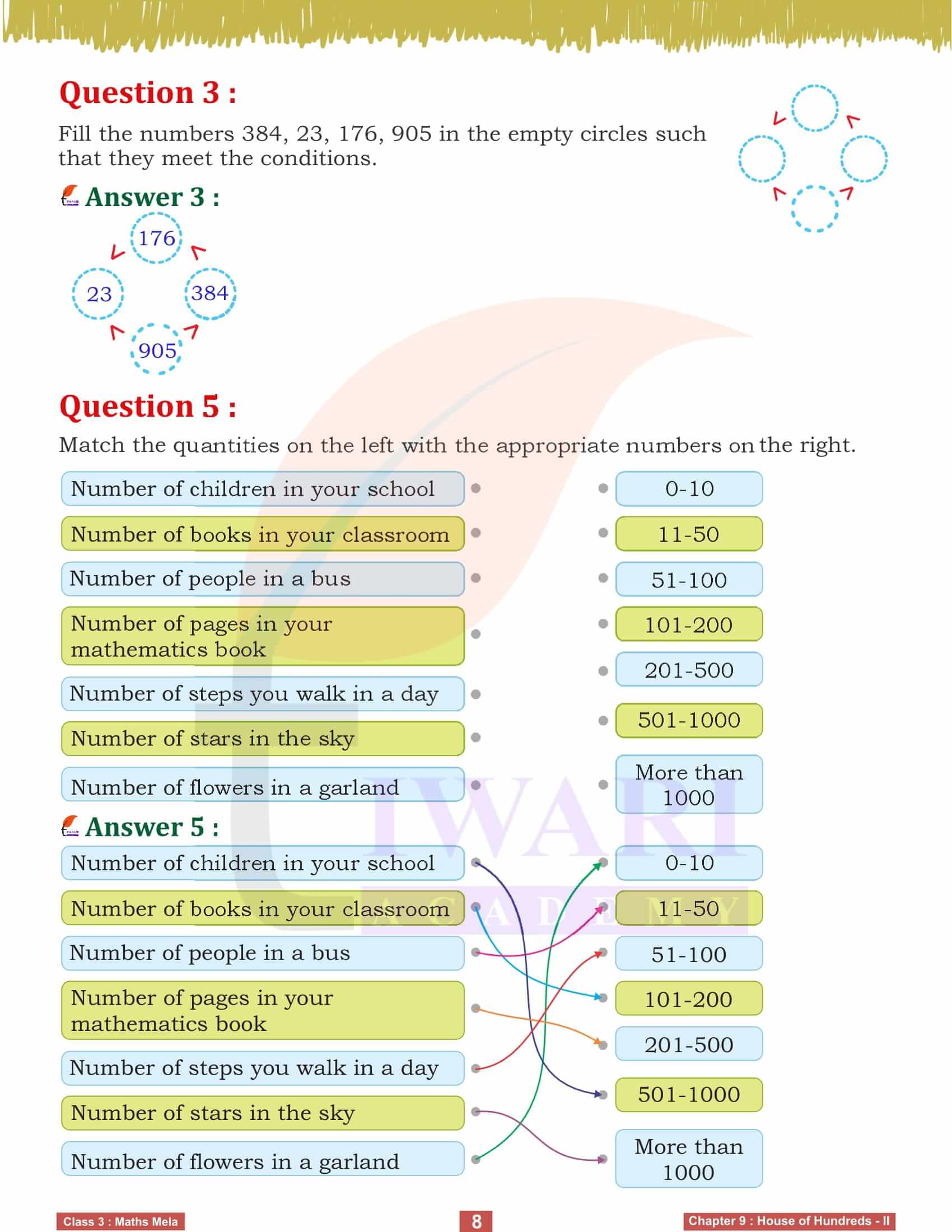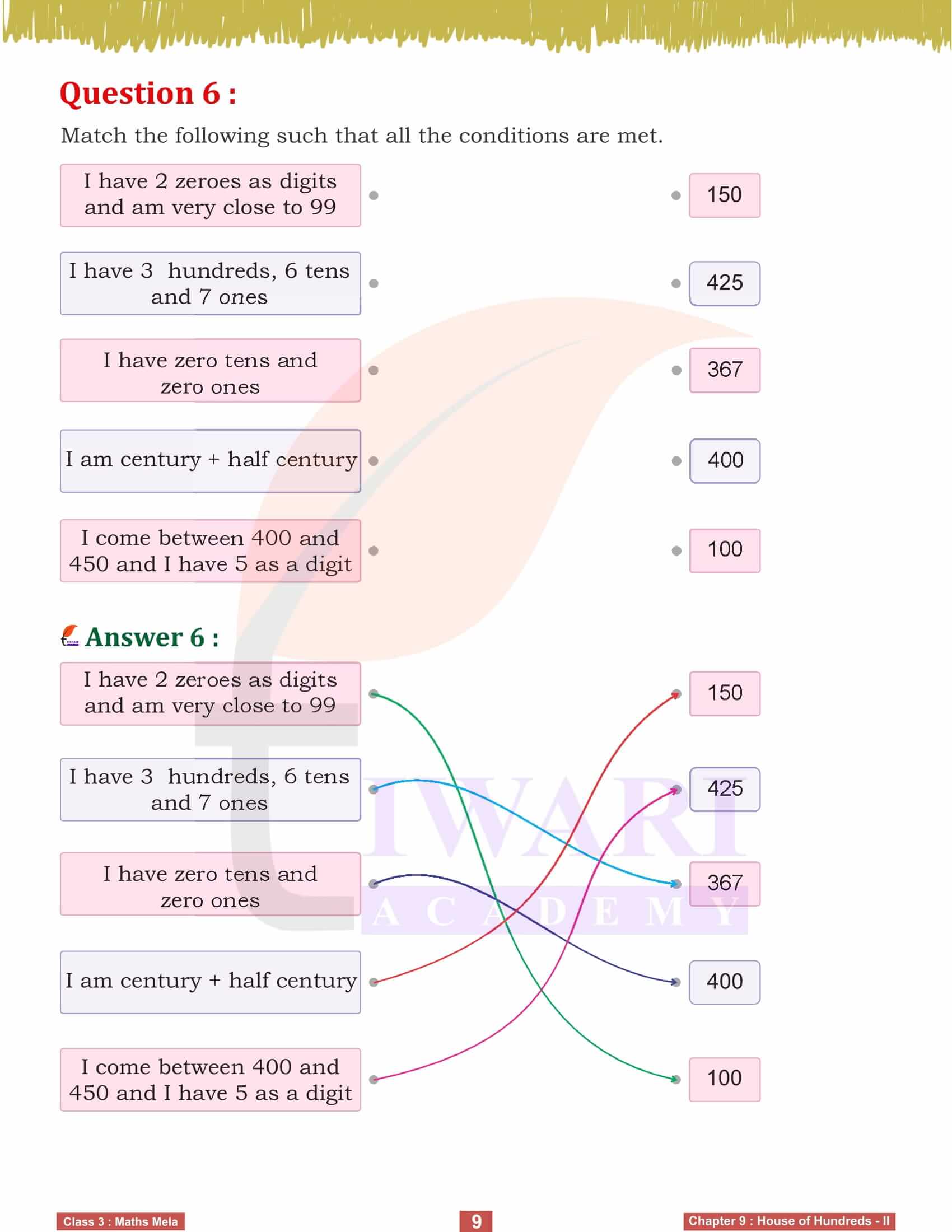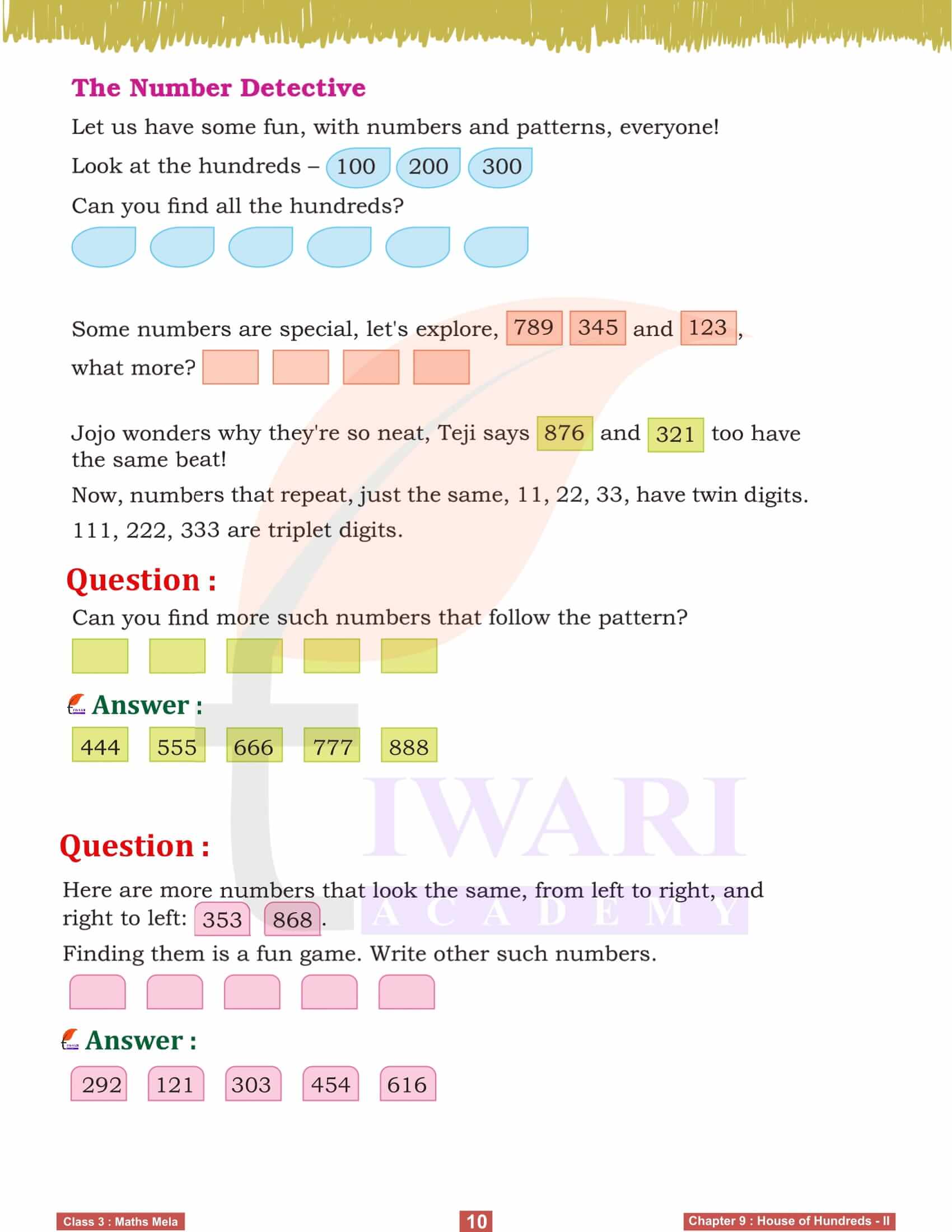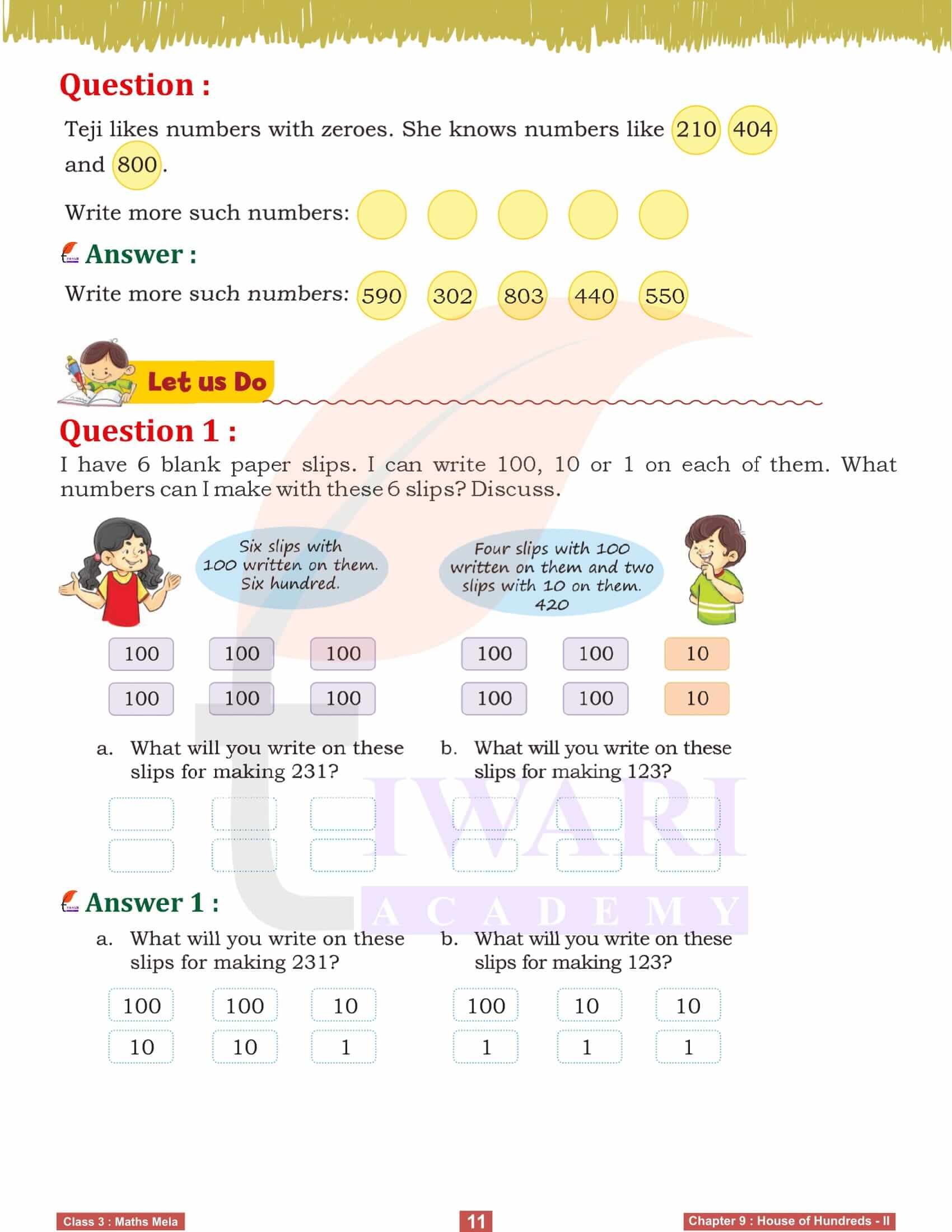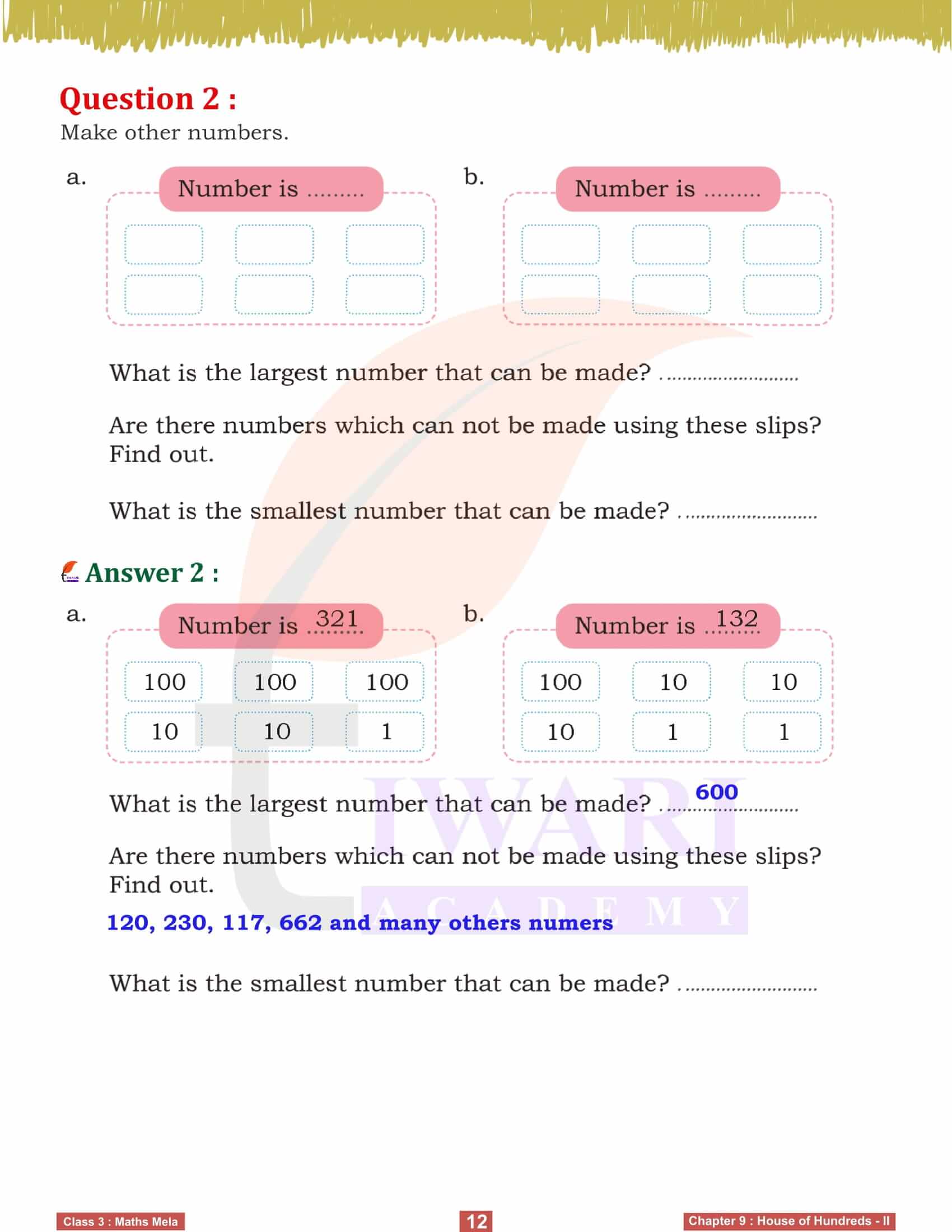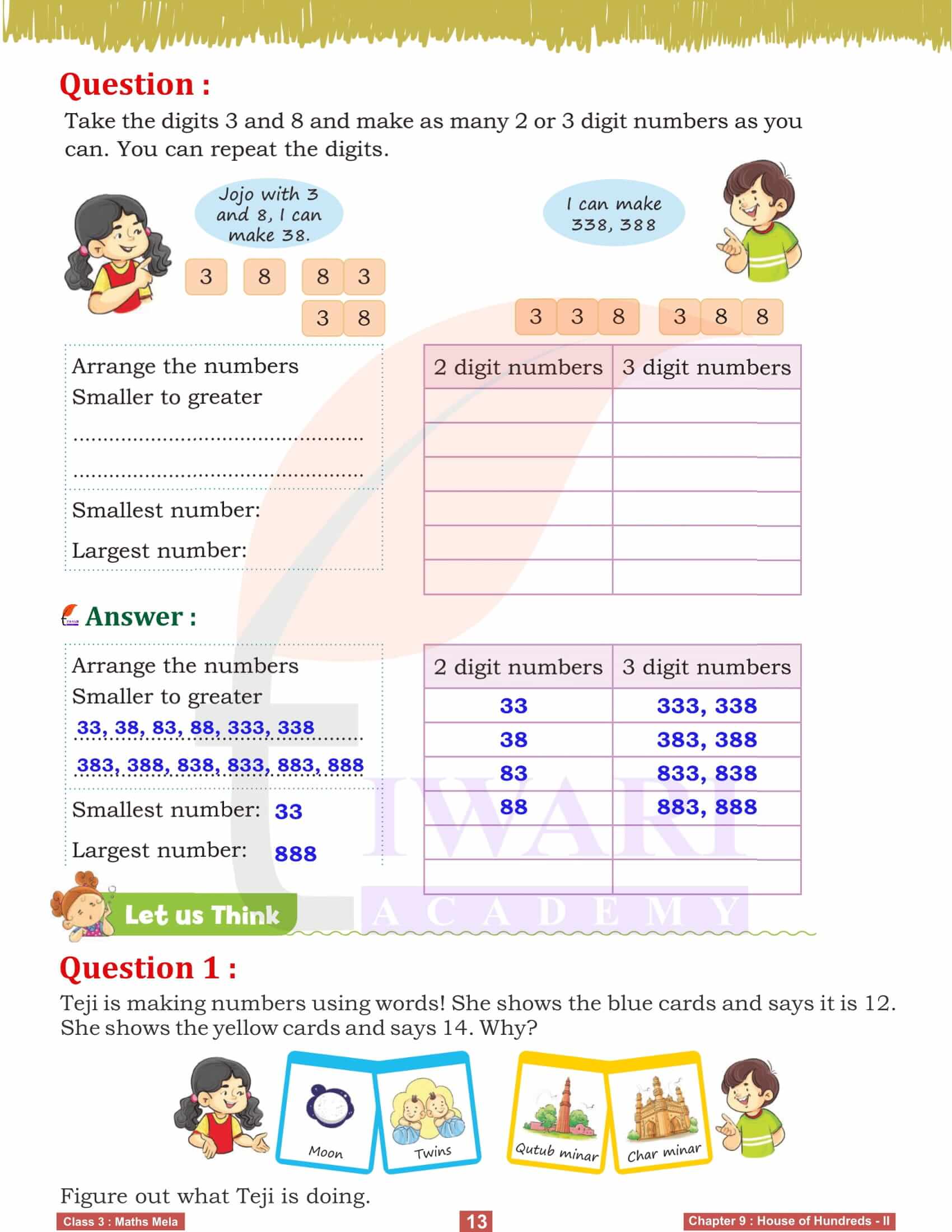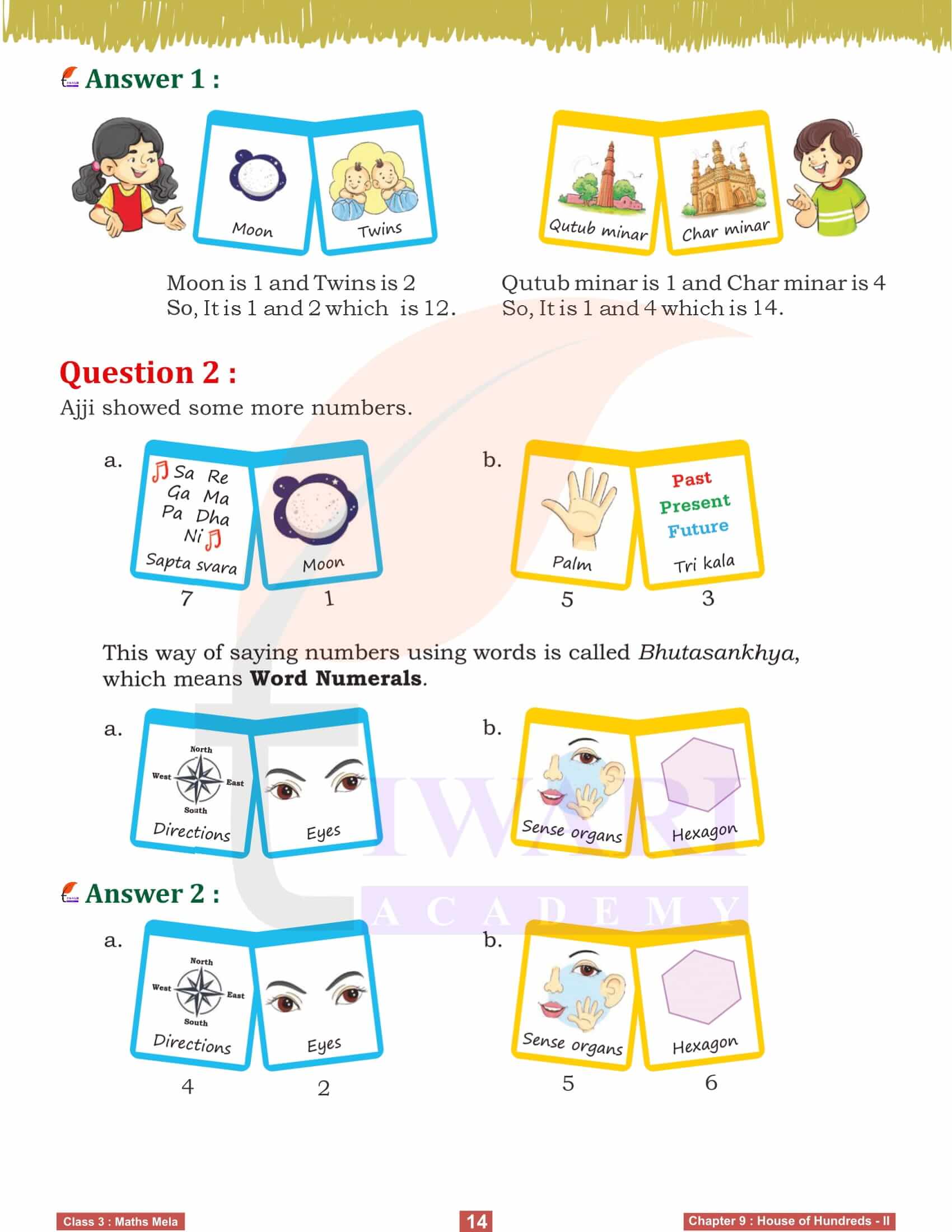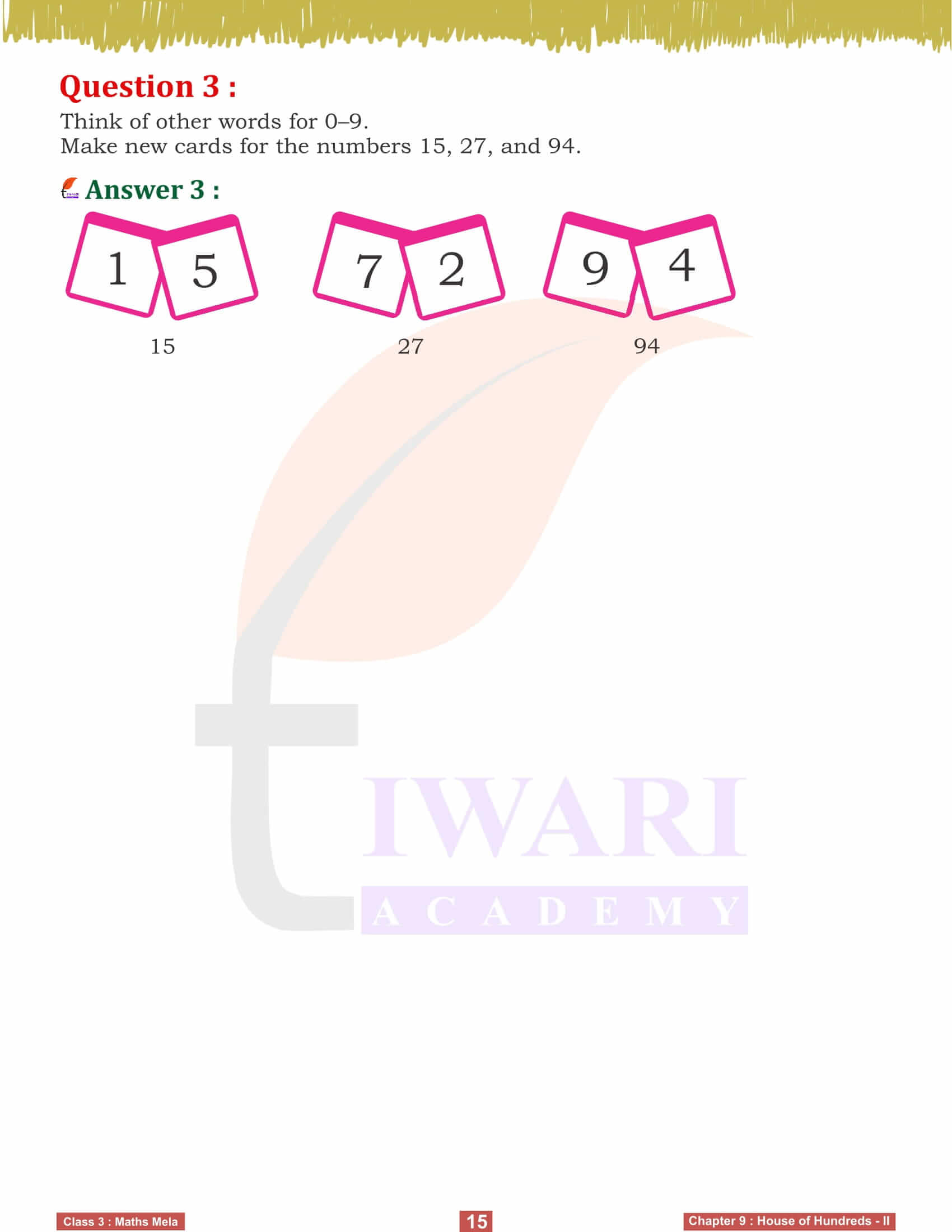NCERT Solutions for Class 3 Maths Mela Chapter 9 House of Hundreds – II in Hindi and English Medium for session 2025-26. Building on the previous chapter, this section delves deeper into operations with hundreds. Students practice addition, subtraction, multiplication and division with three-digit numbers. Interactive tasks such as number games and problem-solving exercises, help solidify their understanding of these operations.
Study Tips for Class 3 Math
Class 3 Maths Mela Chapter 9 House of Hundreds – II
Class 3 Maths Mela Chapter 9 House of Hundreds – II Introduction
Class 3 students, today we are delving into an exciting chapter called “House of Hundreds – II.” This chapter is a continuation of our journey through the world of numbers and their relationships. It builds on what we learned in previous chapters, exploring more complex concepts while making them easy and fun to understand. We will look at different ways to represent numbers, how to place them correctly on a number line, and various methods to estimate and count large numbers. This chapter is designed to sharpen your numerical skills and boost your confidence in handling numbers.
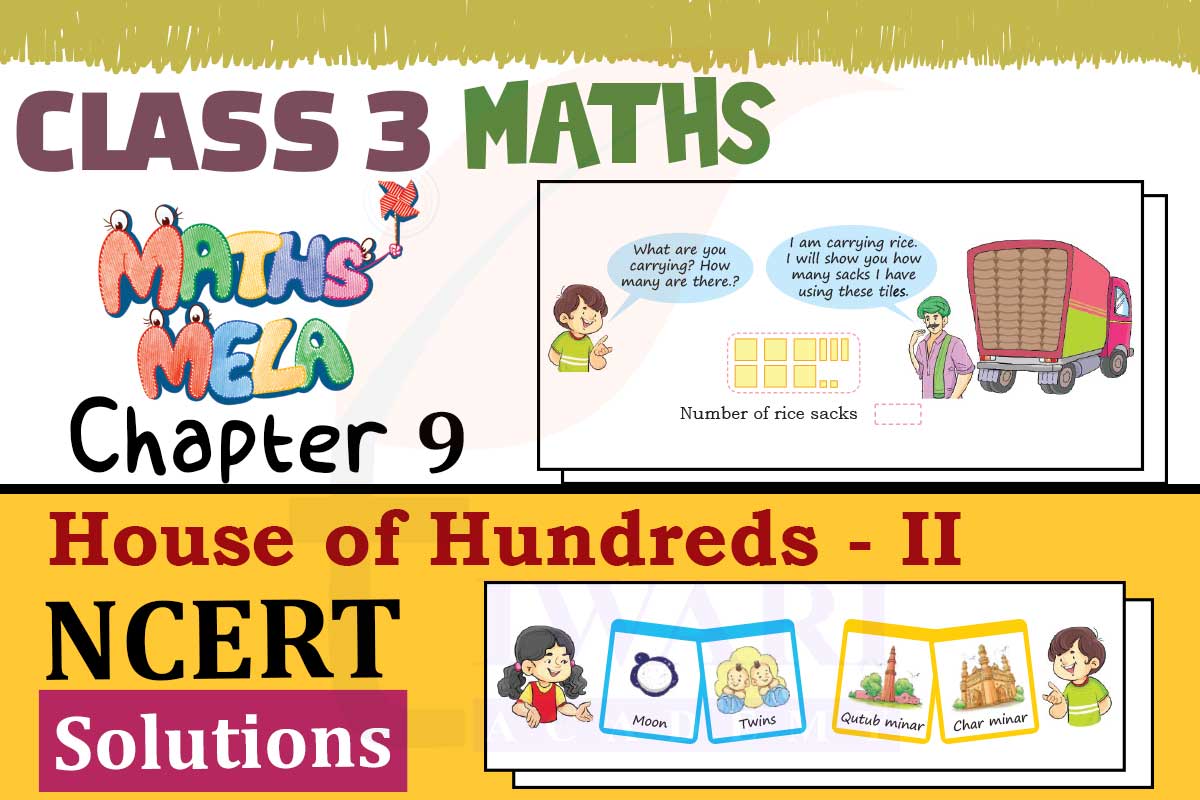
The Tale of Akbar and Birbal
Our chapter starts with an engaging story of Akbar and Birbal. One day, as they walked through a garden, Akbar was curious about the number of crows in the sky. Birbal cleverly guessed the number, explaining that if there were fewer crows, some might be on holiday, and if there were more, some might be visiting from elsewhere. This story sets the stage for our exploration into estimating and understanding large numbers. It shows how even in ancient times, people used clever methods to handle large quantities.
Understanding Large Numbers
To grasp large numbers, we use tools like a 1000 ginladi. This visual aid helps us see how big 1000 is by breaking it down into manageable chunks. We also explore numbers beyond 500, such as 600, 700, 800, and so on. By drawing tiles and placing numbers on a number line, we get a clear picture of their relative sizes. Activities include identifying neighboring hundreds and tens for given numbers and locating various numbers on a number line. These exercises help solidify our understanding of large numbers and their positions.
Practical Exercises and Activities
The chapter 9 includes numerous practical exercises to reinforce our learning. For example, we will draw tiles to represent numbers like 832 and 947, locate numbers on the number line, and find numbers between specific ranges. We also have fun activities like the “Tambola” game, where we fill grids with numbers and strike out those that match given clues. These activities not only make learning fun but also ensure that we can apply our knowledge in different scenarios.
Number Patterns and Puzzles
We also explore interesting number patterns and puzzles. For instance, we learn about numbers with repeating digits, such as 111, 222, and 333, and those that read the same forward and backward, like 353 and 868. There are exercises to fill blank spaces with numbers that meet certain conditions and to write number sentences for given numbers. These puzzles enhance our problem-solving skills and help us recognize patterns in numbers, making us more adept at handling numerical challenges.
Playing with Numbers
Towards the end of the chapter, we engage in activities that encourage us to play with numbers. We make different numbers using slips marked with 100, 10, or 1 and arrange digits to form the largest and smallest possible numbers. There are also games involving making two- or three-digit numbers using specific digits, such as 3 and 8. These activities are designed to be enjoyable while reinforcing our numerical skills. By playing with numbers, we develop a deeper understanding and become more comfortable with them.
Conclusion and Application
As we conclude the chapter 9, we reflect on what we’ve learned and how we can apply it in real life. Understanding large numbers, estimating, and recognizing patterns are skills that are useful beyond the classroom. Whether counting objects, measuring quantities, or solving problems, these skills will serve us well. The chapter ends with a note from the teacher, encouraging us to continue exploring numbers in our surroundings and applying our knowledge in various contexts. This holistic approach ensures we are well-prepared for more advanced mathematical concepts in the future.
Related Links
